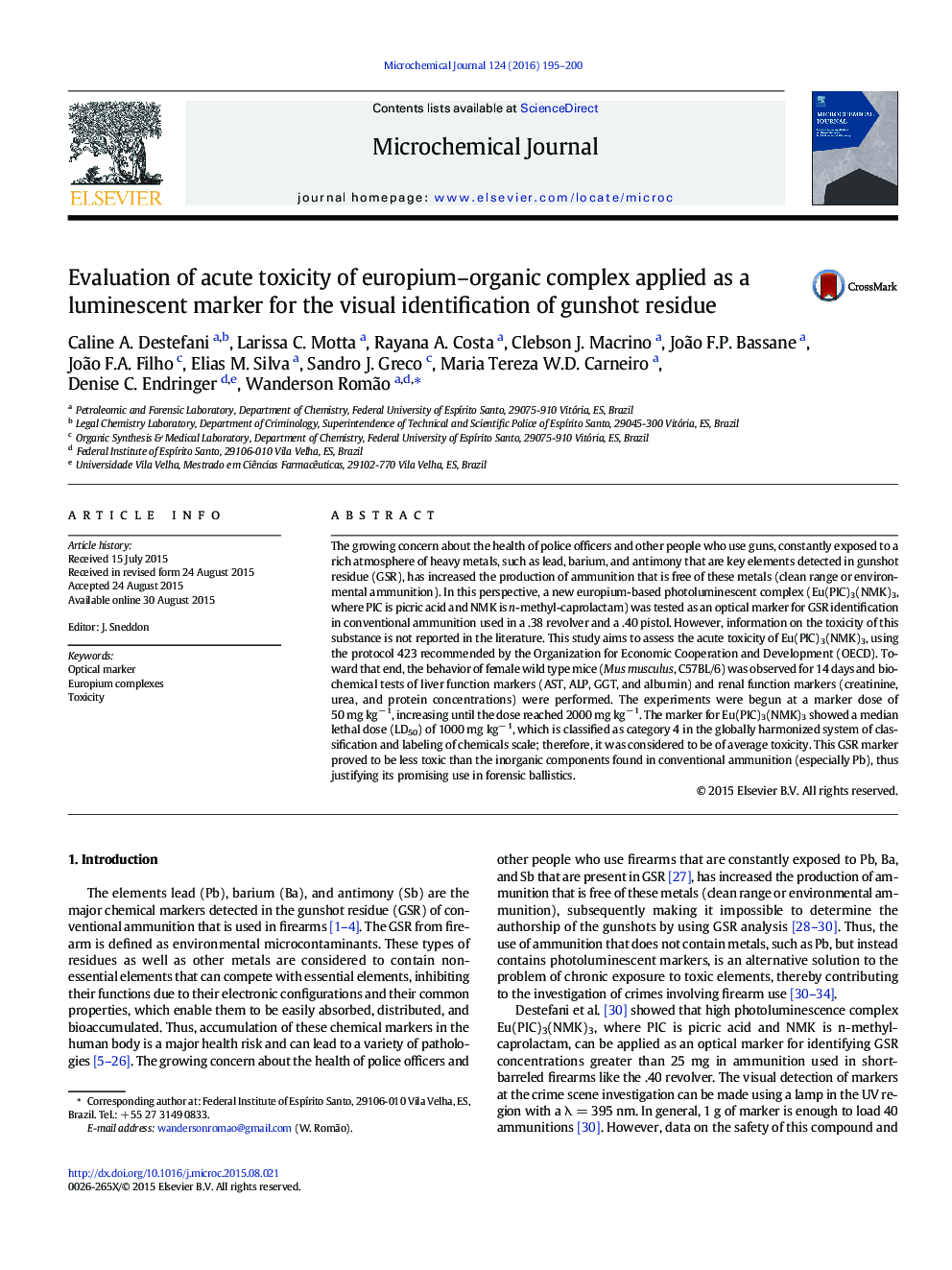| Article ID | Journal | Published Year | Pages | File Type |
|---|---|---|---|---|
| 7642073 | Microchemical Journal | 2016 | 6 Pages |
Abstract
The growing concern about the health of police officers and other people who use guns, constantly exposed to a rich atmosphere of heavy metals, such as lead, barium, and antimony that are key elements detected in gunshot residue (GSR), has increased the production of ammunition that is free of these metals (clean range or environmental ammunition). In this perspective, a new europium-based photoluminescent complex (Eu(PIC)3(NMK)3, where PIC is picric acid and NMK is n-methyl-caprolactam) was tested as an optical marker for GSR identification in conventional ammunition used in a .38 revolver and a .40 pistol. However, information on the toxicity of this substance is not reported in the literature. This study aims to assess the acute toxicity of Eu(PIC)3(NMK)3, using the protocol 423 recommended by the Organization for Economic Cooperation and Development (OECD). Toward that end, the behavior of female wild type mice (Mus musculus, C57BL/6) was observed for 14 days and biochemical tests of liver function markers (AST, ALP, GGT, and albumin) and renal function markers (creatinine, urea, and protein concentrations) were performed. The experiments were begun at a marker dose of 50 mg kgâ 1, increasing until the dose reached 2000 mg kgâ 1. The marker for Eu(PIC)3(NMK)3 showed a median lethal dose (LD50) of 1000 mg kgâ 1, which is classified as category 4 in the globally harmonized system of classification and labeling of chemicals scale; therefore, it was considered to be of average toxicity. This GSR marker proved to be less toxic than the inorganic components found in conventional ammunition (especially Pb), thus justifying its promising use in forensic ballistics.
Keywords
Related Topics
Physical Sciences and Engineering
Chemistry
Analytical Chemistry
Authors
Caline A. Destefani, Larissa C. Motta, Rayana A. Costa, Clebson J. Macrino, João F.P. Bassane, João F.A. Filho, Elias M. Silva, Sandro J. Greco, Maria Tereza W.D. Carneiro, Denise C. Endringer, Wanderson Romão,
